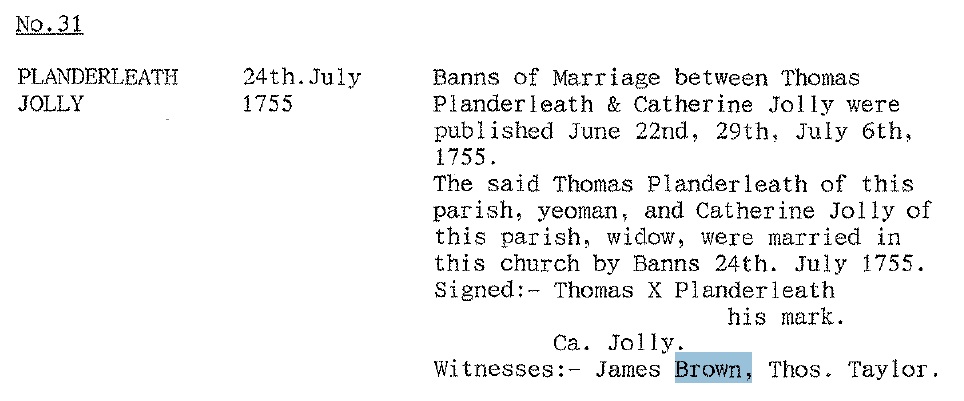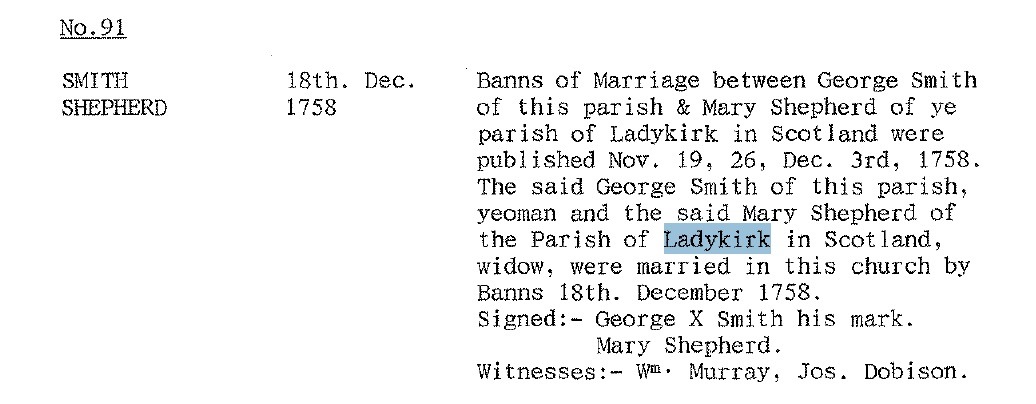|
Humans are creatures of habit. We do things a certain way because we take our lead from others and accept that is the way it is done, has always been done, and will continue to be done. I am not like that, I look on as the herd make its way steadily over the field and quite happily head off in the opposite direction on my own, to where I know there is better grazing!. This is true in the case of ancestral indexes and parish records. Many transcribed records such as these can be purchased from our local archives or Family History Societies in ‘PDF’ format. In the same way as we would in the Archive Office, we go to the index and make a note of the page numbers that may contain information on the family or individual we are researching. We then painstakingly flick back and forth throughout the book frantically noting down every detail encountered that may or (may not be) relevant to our research. Not only can this be slow, but it relies heavily on the quality of the index. In many cases this method would omit the occurrence of a name appearing within the descriptive text itself. When I thought of sharing the following tip with you, I undertook an experiment:- Taking the parish records for Norham Marriages 1754-1812, I selected a family name I have not researched in depth – Brown, from the Index of Males. I then ran a search of the document which had been optimised with an OCR (Optical Character Recognition) programme, (I use Adobe Acrobat which is not cheap I grant you, but I believe there are many free software programmes out there that will perform the same task just as well) and this was the result:- The very first instance of the name Brown appeared on page 8, not on page 12 as the index would have us believe. (NB. The numbers that appear in the top left hand corner of the following and subsequent examples are record entry references, not page numbers.) James Brown appears as a witness to the marriage of a seemingly unrelated couple. This is not an isolated case. There are further examples of a John Brown, a Joseph Brown and a William Brown appearing several times as witnesses to such marriages, as well as to marriages where one of the couple bears the same surname. How is this information of use to the researcher? If a name regularly appears as a witness to a baptism or marriage, it may indicate that they are an employer, or a person of some standing within the community. It may also imply that a familial relationship exists but is not immediately obvious due to the names of the couple. In the case illustrated above the bride Catherine Jolly is cited as a widow. Is it possible then that her maiden name was Brown? Whilst I have not followed this case through, it certainly opens up other avenues for potential investigation. Of course the search is not limited to names of people it can be equally useful when applied to places. This is particularly relevant in a parish such as Norham, which sits not only on the boundary of a County, but also of a Country. The parish church of Ladykirk is less than a mile away on the opposite bank of the River Tweed. It lies in the County of Berwickshire, which is part of Scotland. As researchers we often attribute the lack of a marriage record to the fact that the couple resident in England skipped across the Border to Scotland to avail themselves of a cheap and quick “irregular” wedding that often as not went undocumented. Whilst this is frequently the case, the exact opposite is also true. Using the same set of marriage records a simple search with "Ladykirk" as the search term produces some results which may surprise you:- A search for the marriage of this pair in “Scotland’s People” returned no results whatsoever. In fact the search for an Andrew Purvis (using surname variants) between the dates of 1755 and 1768 returned only one result dated 1767 in Edinburgh. Similarly a search using the bride’s name Jane Todd (variants inc) although returning 15 results, none were to an Andrew, or indeed a Purvis by any other Christian name. It would appear that the only record of this union is in the Norham parish records, in England! Nor is this by any means an isolated case:- Again there is no record for this marriage in the Scotland’s People database. The fact that the date of the actual marriage is recorded leads me to believe that it did occur. A further check on the Family Search website reveals that although the registers exist for this period, the pages are reported as blank between the dates Jan 1715 - Jun 1783. Furthermore by applying the rule that a marriage usually occurred in the parish of the Bride could have also led to this following marriage record potentially being missed:- Using other search terms such as occupations, status as to marriage can also yield interesting information. For example during the same period 1754-1812 there were 8 "Yeomen" but only 1 "Farmer", 18 Widows, and 10 Widowers married in Norham. This is just a very quick example of how using OCR across your PDF’s can yield Much More Information (MMI) than a search based on the record index alone. It is simple, quick and often free. I personally take the information found by this method on to another level, but that is for another time!.
0 Comments
Leave a Reply. |
AuthorSusie Douglas Archives
December 2021
Categories |
Copyright © 2013 Borders Ancestry
Borders Ancestry is registered with the Information Commissioner's Office No ZA226102 https://ico.org.uk. Read our Privacy Policy






 RSS Feed
RSS Feed

